To analyse how technology affects language professionals and language work, one of our first tasks has been to establish what “language work” is and who the current “language professionals” are.
LITHME WG7 brings together researchers and practitioners with diverse backgrounds and expertise in the different areas of language work and/or working with languages, such as translation and interpreting, terminology, clinical or forensic linguistics, copywriting and language technology. This allows the members of the group to network and collaborate with other experts on these areas.
To analyse how technology affects language professionals and language work, one of our first tasks has been to establish what “language work” is and who the current “language professionals” are. Work and professions are also undergoing change, affected by technology, and future work profiles may be at the intersection of old skill profiles. As a starting point for a conceptualisation of such profiles and for mapping the effects of technology, the LITHME WG7 has drafted the taxonomy of (some of) the professions involved nowadays in “language work” shown in figures 1 to 6.

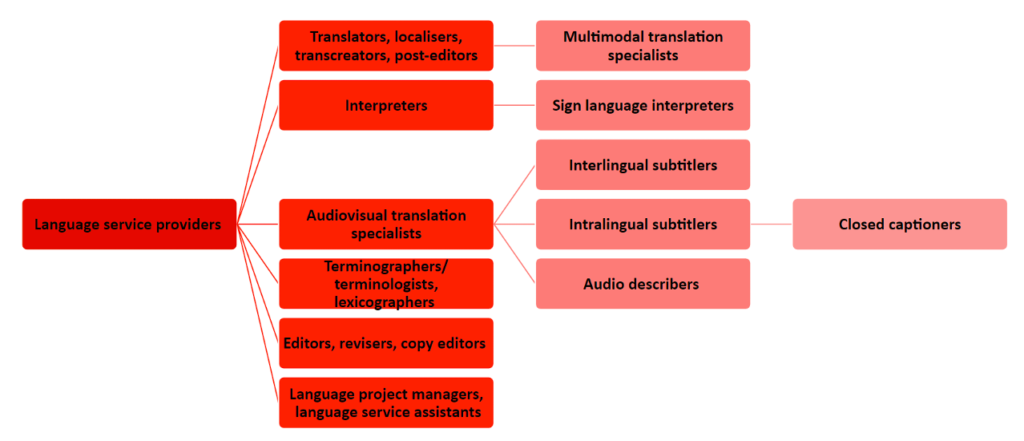
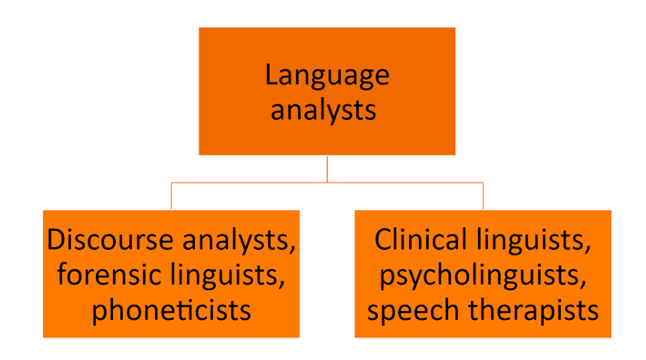
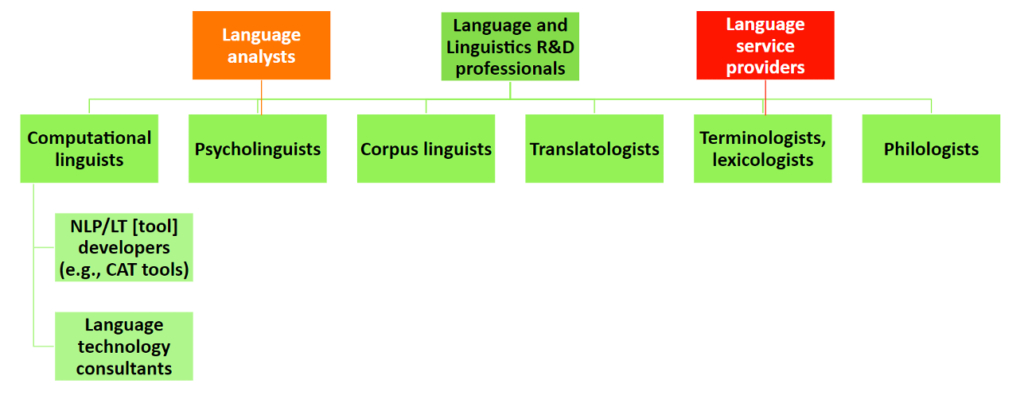
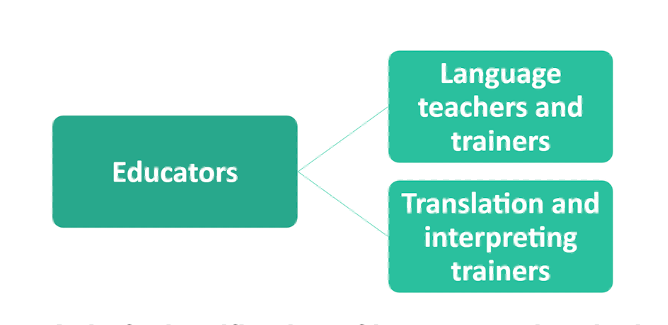
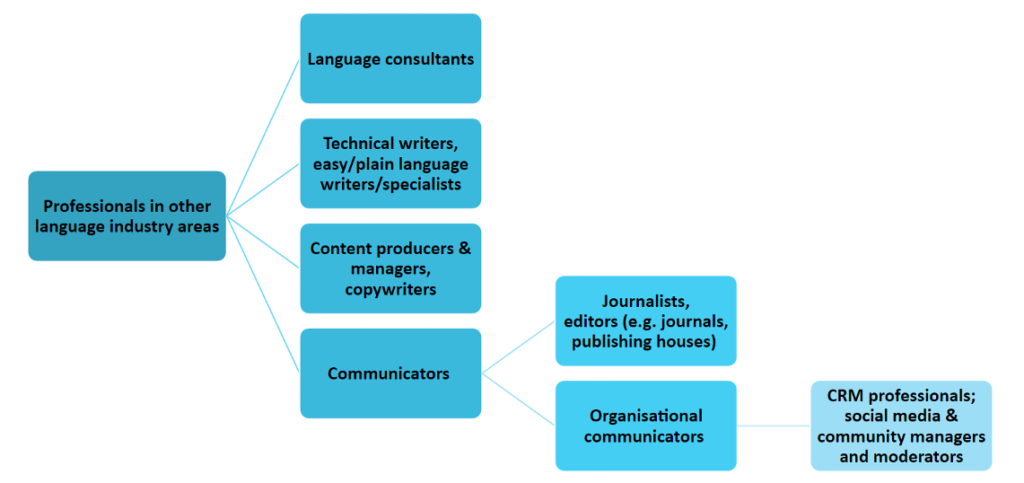
In order to form an understanding of which technologies are being used by language professionals and how, we have analysed a set of 37 surveys on the use of language technologies in language work. A preliminary observation is that the use of language technologies has mostly been studied among translators and interpreters, who are active users of various types of technology from terminology tools to machine translation and speech recognition. However, the set of surveys was not collected in a systematic and/or extensive way, so further research will be conducted to empirically confirm or refute this preliminary result.
In addition to this work, WG7 hosted some invited talks from technology developers and industry representatives to help its members to learn about current developments in the field and future projections. During the first year, WG7 has hosted the presentations “Introducing Babbel – The language experts and tools behind the learning content of the world’s most successful language app”, by Lea Kliemann from Babbel, and “Introducing the company Translated”, by Sébastien Bratières from Translated, who discussed technologies used in dubbing, particularly the emerging use of speech synthesis. These talks have given the WG members insight into technologies that are being developed and used in the language industry. Invited talks with technology and industry experts will continue as part of the WG7 meeting approximately every other month.
As the LITHME WG7 activities continue, we plan to dig deeper into how different language professionals use language technology, what new technologies are emerging, how they are shaping language work and what the implications are for educating language professionals. If this exploration interests you, come and join us!
Blog post authors
Antonio Pareja-Lora (https://orcid.org/0000-0001-5804-4119)
Maarit Koponen (https://orcid.org/0000-0002-6123-5386)

